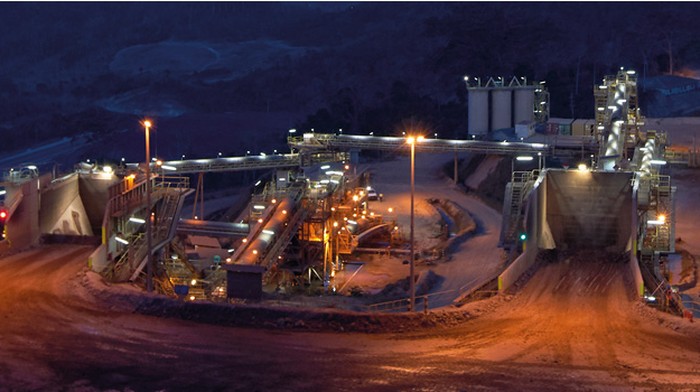PT. Sinar Sansun Sejahtera
Our Services
IRON SAND
Benefits of Iron Sand – Iron sand is one of the natural resources that is widely used in various industrial sectors, especially the cement industry and steel making. Iron sand has a dark gray and blackish color, the higher the Fe (iron) content in it, the blacker the color will be. Iron sand itself consists of a mixture of magnetite, Fe304, and small amounts of titanium, silica, manganese, calcium, and vanadium.
This content is what makes iron sand one of the sources of magnetic materials that are widely used in making steel. Iron sand is formed due to the process of destroying the original rock (which contains iron minerals in it) by weather, waves, and surface water. The types of original rocks in question include iron oxide, ilmenite, and magnetite.
The original rock that has undergone a natural destruction process will then accumulate in the sedimentation stage and be washed away by sea waves. Therefore, this iron sand is often found around coastal areas. For example, on the coast of the West Coast of Sumatra, the coast of Bali, the coast of the South Coast of Java, to the coast of the North Coast of Papua and the coast of Lombok
The iron sand sediment in this coastal area is the result of the interaction of sea water and the fluvial system. Apart from sea water, this process can also be triggered by volcanic phenomena. Iron sand that comes from volcanic andesitic can occur due to volcanoes and the flow of rivers in the mountains that lead to the coast. In this one process, volcanoes, rivers, and beaches are the main requirements for the formation of iron sand.
Then, how do you distinguish iron sand from other ordinary sand? In addition to its color, you can distinguish it using a magnet. Iron sand contains high Fe (iron), which is why this sand will be attracted to a magnet placed near it.
Benefits of Iron Sand
The utilization of iron sand is not yet optimal, in Indonesia the utilization of iron sand is still limited because it is only used as an additional material for the cement manufacturing industry. Meanwhile, New Zealand and China have utilized iron sand as a raw material in the manufacture of steel.
So, what are the benefits of this iron sand? Here are some of them:
1. Processed into Ink Sand for Making Cement and Concrete
The first use, iron sand is mostly processed into ink sand. This ink sand will later be used as a basic material for making cement and concrete. The United States and other countries including Indonesia, widely use iron sand for this purpose.
In America, iron sand is widely found in the Great Lakes, New England, New York, California, and Great Lakes regions. The iron sand in this region has a high chromium and titanium content. The mined sand will then be mixed with garnet ore and feldspar sand, then processed into ink sand for the needs of the cement and concrete industry. In Indonesia, iron sand is mined from coastal areas and then processed into ink sand for the basic material of cement.
2. Raw Materials for Making Steel
The second benefit of iron sand is as a raw material for making steel. Steel is one of the important materials used in various construction projects. Steel is known for its excellent strength and durability. Well, one of the materials that can be used to make steel is iron sand.
Iron sand containing Fe is what will be processed and separated from other impurities (content of other materials besides Fe). The results of this filtering will be pure Fe and processed into steel. The amount of demand for steel itself always increases every year, which is why materials such as iron sand have an important role in the steel production process to meet market demand. Unfortunately, the process of processing iron sand into steel is not easy and only a few countries process it.
3. Raw Materials for Making Dry Ink (Toner) and the Like
The third benefit of iron sand is as a raw material for making dry ink (toner) for photocopiers and laser inks. Iron sand can also be processed into basic materials in making cassette tapes. In more general use, iron sand is used as a dye and paint mixture (filter).
4. Closing Mining Holes
When sand mining is carried out, the mining holes will cause depressions or holes. The mining holes can be closed using waste from separating Fe iron sand from its impurities. This remaining waste can also be used for other reclamation.
5. Used as Nanoparticles in Biomedical Fields
This benefit of iron sand has just been discovered and still requires further research. If successful, iron sand can be used as nanoparticles in the biomedical field so that it can be used as an antibacterial material that is useful in the world of medicine.
Iron sand with nanoparticle size will be used as a source of Fe Cation (in the synthesis of cobalt ferrite). The antibacterial material that is obtained can be processed into various products, such as antiseptic and antibacterial soap, and the like.
Those are some of the benefits that can be obtained from iron sand processing. Among the points above, the main benefit of iron sand is indeed for the basic material for making cement and steel. These two uses are the most popular and widely used today.
Videos
Our Clients
Companies That Cooperate with SSS


News
Let’s talk about your project
Regardless of any project size and workload given, the relayed projects will be planned, controlled, conducted and frequently inspected to ensure that any rendered projects are fully compliant with various mining organizations and related structures.




